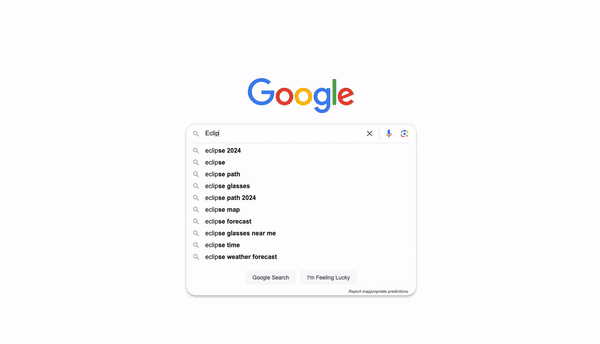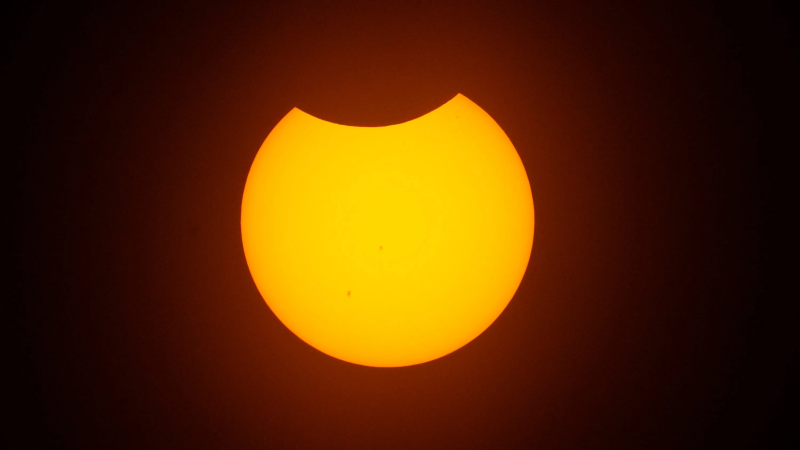Google brings the total solar eclipse to your screen: Here's how to see it
If you aren't able to see the total solar eclipse in your state, you can see it on your screen!
Google has joined in on the eclipse frenzy by adding a cool new animation that gives its users an interactive feel at their own leisure.
In the animation launched Friday, Google users who search about the eclipse can see a graphic overlay depicting what millions on the path of totality will see Monday: the moment when the moon passes between the sun and Earth, revealing just the sun's outermost layer called the corona.
“The moon is having its day in the sun, and people across North America are coming to Google to learn more and celebrate this rare event," Jessica Yu, Google's doodle team lead, told USA TODAY. "We’re excited to mark the 2024 solar eclipse with special experiences on Search for eclipse watchers.”
Yu said that a team of user experience designers created the animation to engage its users.
Science and technology lovers can enjoy the animation by searching specific keywords. Here's what we know.
How can you see Google's total solar eclipse animation?
To see the animation for yourself, users can type the following into the search engine at google.com:
- April 8 eclipse
- Eclipse 2024
- Solar eclipse
- Solar eclipse 2024
Here is what you should see on your screen:

Decoding the sky:A definitive solar eclipse guide for kids (adults also welcome)
When is the total solar eclipse?
On April 8, a total solar eclipse is expected to pass over he United States, Mexico and Canada.
Nearly 28% of the U.S. will experience the eclipse's journey through the country for a few minutes, NASAreports.
What states will get to see the solar eclipse?
The path of the eclipse will enter the U.S. in Texas, and pass through Oklahoma, Arkansas, Missouri, Illinois, Kentucky, Indiana, Ohio, Pennsylvania, New York, Vermont, New Hampshire, and Maine, according to NASA, which added that some parts of Michigan and Tennessee will also experience it.

When was the last solar eclipse?
The last total solar eclipse in the U.S. happened on Aug. 21, 2017. In October, skygazers were delighted by a rare "ring of fire" solar eclipse, where the moon slides in front of the sun but doesn't totally obscure it, creating a halo effect.
Ahjané Forbes is a reporter on the National Trending Team at USA TODAY. Ahjané covers breaking news, car recalls, crime, health, lottery and public policy stories. Email her at aforbes@gannett.com. Follow her on Instagram, Threads and X @forbesfineest.
Disclaimer: The copyright of this article belongs to the original author. Reposting this article is solely for the purpose of information dissemination and does not constitute any investment advice. If there is any infringement, please contact us immediately. We will make corrections or deletions as necessary. Thank you.







